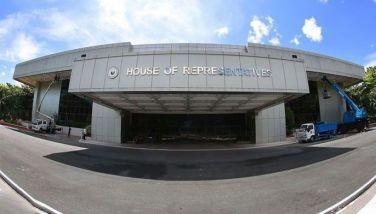Good intention, bad implementation
My family has a five-year-old car that is scheduled for registration in May. By that time I hope the mess that is the motor vehicle inspection requirement has been sorted out – reasonably, realistically and practicably.
I looked up the law behind this latest controversy, and it’s not a law but a Memorandum Circular 2018-2158 issued by the LTO (Land Transportation Office) with “guidelines for the authorization of private motor vehicle inspection centers (PMVICs).”
What caught my attention was that it was issued on Nov. 28, 2018 – over two years ago. But through 2019 and 2020 this was kept in the freezer or in hiding… until suddenly last month, it was foisted on unsuspecting motorists. Why the sudden implementation after a two-year delay, with hardly any warning or consultation or information drive?
I did not bother to look at the very long – several pages – list of items that need to be checked for your vehicle to pass inspection and get registered. But I don’t think you can blame me if I worry about our five-year-old car not passing the inspection. We get a lot of use out of the car – bringing our two kids to school (when they had school), my husband and me to work, weekend visits to our families, etc. And although my husband is maalaga with the car, getting it serviced regularly, I imagine there will be something that the PMVIC will find wrong.
Especially after I heard about a friend’s two-year-old top of the line SUV that failed on several items. He brought it to the dealer, who said there was nothing wrong. But they “fixed” it anyway (at a cost of several thousand pesos) so he could go back and pass re-inspection (paying P900 on top of the P1,800 for the first inspection).
Who are these PMVICs anointed by the LTO? Who owns them (or shouldn’t I ask)? Who evaluated their qualifications? Who set the fees? There are media reports of damage to vehicles by careless/incompetent technicians doing the inspection. Are these people more knowledgable than the guys at the official dealership?
They have formed an association – Vehicle Inspection Center Operators Association of the Philippines – that their FB page claims to advocate “roadworthiness, integrity, transparency.” There’s no quarrel with the first (I’ll suspend judgment and comment on the last two) which I am sure is also the aim of the LTO and the DOTr. But how they’ve gone about doing this is not well thought out, certainly questionable if not criminal (who’s trying to pull a fast one on us?). The mis-implementation will end up turning the public against the very valid goal of having roadworthy cars. So now people are calling for its suspension.
This is not the only “strange” thing around. RA 11229 or the Child Safety in Motor Vehicles Act is another. The law was enacted in February 2019 and the IRR approved on Dec. 23, 2019. Again, the law was in hiding for a year until it was recently sprung upon the public. Part of the law required regular nationwide information campaign within six months from passage of the law; but one LTO official (not the “get a bigger car” guy) had to admit at the Senate hearing that their info campaign was “lacking.” Now this law has been suspended, on orders of no less than the President.
We seem to have a history of hare-brained, half-baked laws and regulations. The requirement for barriers between driver and passenger on motorcycles comes to mind. This was an NTF (National Task Force) on COVID-19 rule that limited riding in tandem to people in the same household, so that married couples had to produce a marriage certificate or IDs with the same address for co-habitating couples when they were stopped at check points. Social media had a field day on this, with couples bringing blow-up wedding photos to prove their relationship. This rule came out in July 2020; these days I only see the rare Angkas driver with a barrier and everyone else just speeding along, two on a bike and no police or traffic enforcer checking up on their relationship.
Before that, there was the 1977 PD 1153 mandating each citizen to plant a tree every month for five consecutive years, then the May 2019 HB 8728 or the Graduation Legacy for the Environment Act that required all graduating students in elementary, high school and college to plant at least 10 trees before they are allowed to graduate.
All these laws had good intentions, but that’s all. We seem to be very good at grand gestures, but sadly, not on the nitty-gritty details of implementation. The end result is that the good intentions, the noble ideals, are not fulfilled, and we end up with nothing. – Judy Cotanco, Pasay City
- Latest



















